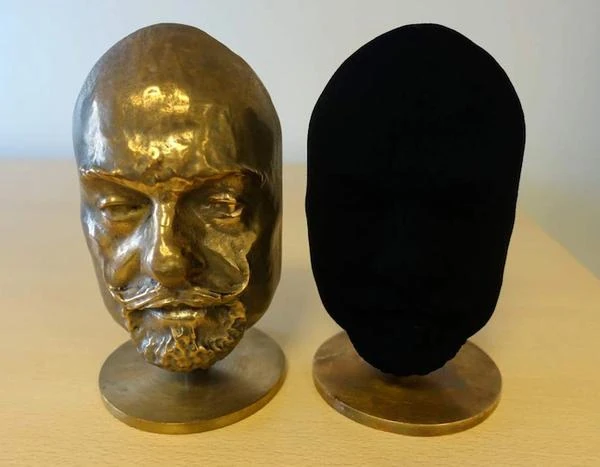
Image description: Surface covered with Vantablack showing a total lack of visual relief. Objects appear as "black holes" or flattened shapes, as the human eye perceives reflected light to judge the shape and depth of objects.
Vantablack is a material made of millions of carbon nanotubes, each about 3,500 times thinner than a human hair. These nanotubes act as "traps" for light: when a light ray hits the surface, it is almost entirely absorbed. In fact, Vantablack can absorb up to 99.965% of visible light, making it one of the darkest materials ever created.
Developed in 2014 by the British company Surrey NanoSystems, Vantablack quickly attracted attention for its appearance so black that it creates the illusion of a void or two-dimensional surface. This material is so effective at absorbing light that three-dimensional objects covered in Vantablack appear flattened, as if they have no volume.
The unique structure of Vantablack is based on the use of carbon nanotubes. These microscopic tubes are vertically aligned and behave like microscopic cavities that trap photons. When a photon enters this "forest" of nanotubes, it repeatedly bounces between the walls until it is eventually absorbed by the material. This lack of light reflection is why Vantablack appears so black.
When a light ray hits the surface coated with Vantablack, it penetrates a dense "forest" of carbon nanotubes. Instead of bouncing off the surface (as is the case with most materials), the light is trapped inside the nanotube network.
The light photons are repeatedly captured between the walls of the nanotubes, undergoing a series of internal reflections. With each reflection, the photons gradually lose their energy, being converted into heat. The nanotubes reflect almost no light, which significantly reduces the possibility of external diffusion or reflection.
This phenomenon is comparable to a series of defective mirrors, where light is continuously reflected in all internal directions but never escapes. This continuous and repeated absorption leads to the near disappearance of incident visible light, giving the impression of absolute black.
Most of the photons trapped in this matrix eventually lose their energy in the form of heat, dissipated through the material. This is what allows such high absorption rates, close to 100%. The process of converting light into heat is essential to prevent the re-emission of absorbed photons as reflected light.
Due to its exceptional ability to absorb light, Vantablack finds applications in many fields (astronomy, aerospace, optics, imaging, military, etc.), often where maximum light absorption is required or where extreme visual contrasts are sought.
- Telescope improvement: By reducing stray light, Vantablack allows observation of fainter celestial objects.
- Reducing light reflection on satellites: This improves the precision of measuring instruments and reduces the thermal signature of satellites.
- Improving image quality in cameras and photo devices: Vantablack reduces internal reflections and improves contrast.
- Manufacture of eye lenses: It helps reduce light scattering and improves night vision.
- Camouflage: Vantablack renders objects nearly invisible, which is particularly useful for military equipment.
- Reducing thermal signature: Objects coated with Vantablack are harder to detect via infrared.
Contrary to popular belief, Vantablack is not a pigment or a paint. It is a technical coating applied to specific surfaces under controlled conditions. Moreover, while Vantablack is often associated with art due to its striking visual effect, it is mainly used for its optical properties in fields such as scientific research and military technologies.
Vantablack acts as a photon trap, where incident light is continuously absorbed and converted into heat, thanks to the structure of carbon nanotubes that minimizes light reflection. This unique combination of geometry and materials allows Vantablack to absorb up to 99.965% of visible light, making it one of the darkest materials ever invented.